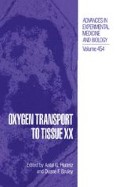Abstract
Reactive oxygen species been implicated in oxidative stress and vascular injury. These include the free radicals Superoxide (O2⋅)’ hydroxyl (OH⋅), peroxyl (LO2⋅) and alkoxyl (LO⋅) and the non-radicals hydrogen peroxide (H2O2), lipid peroxides and singlet oxygen. It was originally thought that the hydroxyl radical (OH⋅) was likely to be the most damaging species (1); however, this free radical is so reactive that it has a diffusion distance of no more than a few nm at most (2). The hydroxyl radical’s non-specific reactivity also makes it less likely that it will react with a vital cellular component. Other less reactive free radicals may be more toxic in that they can mediate damage at some distance from where they are formed.
Access this chapter
Tax calculation will be finalised at checkout
Purchases are for personal use only
Preview
Unable to display preview. Download preview PDF.
References
Halliwell B, Gutteridge JMC. Oxygen free-radicals and iron in relation to biology and medicine—some problems and concepts. Arch. Biochem. Biophys. 1986; 246:501–514.
Hutchinson F. The distance that a radical formed by ionizing radiation can diffuse in a yeast cell. Radiat. Res. 1957; 7:473–483.
Darley-Usmar V, Wiseman H, Halliwell B. Nitric oxide and oxygen radicals: a question of balance. FEBS Lett. 1995; 369:131–135.
Beckman JS. The physiological and pathological chemistry of nitric oxide. In: Lancaster J jr., ed. Nitric oxide: principals and actions. San Diego: Academic Press, 1996:1–82.
Beckman JS, Ye YZ, Anderson PG, et al. Extensive nitration of protein tyrosines in human atherosclerosis detected by immunohistochemistry. Biol. Chem. Hoppe. Seylers 1994; 375:81–88.
Kooy NW, Royall JA, Ye YZ, Kelly DR, Beckman JS. Evidence for in vivo peroxynitrite production in human acute lung injury. Amer. J. Resp. Crit. Care Med. 1995; 151:1250–1254.
Hantraye P, Brouillet E, Ferrante R, et al. Inhibition of neuronal nitric oxide synthase prevents MPTP-induced parkinsonism in baboons. Nature Medicine 1996; 2:1017–1021.
Turrens JF, Boveris A. Generation of Superoxide anion by the NADH dehydrogenase of bovine heart mitochondria. Biochem. J. 1980; 191:421–427.
Brown GC, Cooper CE. Nanomolar concentrations of nitric oxide reversibly inhibit synaptosomal cytochrome oxidase respiration by competing with oxygen at cytochrome oxidase. FEBS Lett. 1994; 356:295–298.
Cooper CE. Ferryl iron and protein free radicals. In: Rice-Evans CA, Burdon RH, eds. Free Radical Damage and its Control. Amsterdam: Elsevier, 1994:65–109.
Gibson JF, Ingram DJE. Location of free electrons in porphin ring complexes. Nature 1956; 178:871–872.
Newman ESR, Rice-Evans CA, Davies MJ. Identification of initiating agents in myoglobin-induced lipid peroxidation. Biochem. Biophys. Res. Comm. 1991; 179:1414–1419.
Kanner J, Harrel S. Initiation of membrane lipid peroxidation by activated metmyoglobin and methaemoglobin. Arch. Biochem. Biophys. 1975; 237:314–321.
Giulivi C, Hochstein P, Davies KJA. Hydrogen peroxide production by red blood cells. Free Radical Biol. Med. 1994; 16:123–129.
Svistunenko DA, Patel RP, Voloshchenko SV, Wilson MT. The globin-based free radical of ferryl hemoglobin is detected in normal human blood. J. Biol. Chem. 1997; 272:7114–7121.
Patel RP, Svistunenko DA, Darley-Usmar VM, Symons MCR, Wilson MT. Redox cycling of human metHb by H2O2 yields persistent ferryl ion and protein based radicals: effect of catalase. Free Radical Res. 1996; 25:117–123.
Uppu RM, Pryor WA. Biphasic synthesis of high concentrations of peroxynitrite using water-insoluble alkyl nitrite and hydrogen peroxide. Met. Enzymol. 1996; 269:322–329.
Gorbunov NV, Osipov AN, Day BW, Zayas-Rivera B, Kagan VE, Elsayed NM. Reduction of Ferrylmyoglobin and Ferrylhemoglobin by Nitric Oxide: A Protective Mechanism against Ferryl Hemoprotein-Induced Oxidations. Biochemistry 1995; 34:6689–6699.
Patel RP. Measurement of haemoglobin or copper ion promoted lipid peroxidation: implications for the oxidative modification of low density lipoprotein [PhD]: University of Essex, UK, 1996.
Svistunenko DA, Patel RP, Wilson MT. An EPR investigation of human methaemoglobin oxidation by hydrogen peroxide: methods to quantify all paramagnetic’ species observed in the reaction. Free Rad. Res. 1996; 24:269–280.
Nicholls P. The formation and properties of sulphmyoglobin and sulphcatalase. Biochem. J. 1961; 81:374–383.
Davies MJ. Detection of Metmyoglobin-Derived Radicals on Reaction of Metmyoglobin with Hydrogen Peroxide and Other Peroxidic Compounds. Free Rad. Res. Commun. 1990; 10:361–370.
Petersen RL, Symons MCR, Taiwo FA. Application of Radiation and Electron Spin Resonance Spectroscopy to the Study of Ferryl Myoglobin. J. Chem. Soc. Faraday. Trans. 1 1989; 85:2435–2443.
Tew D, deMontellano PO. The Myoglobin Protein Radical. Coupling of Tyr-103 to Tyr-151 in the H2O2-mediated cross-linking of sperm whale myoglobin. J. Biol. Chem. 1988; 263:17880–17886.
Gibson JF, Ingram DJE, Nicholls P. Free Radical produced in the Reaction of Metmyoglobin with Hydrogen Peroxide. Nature 1958; 181:1398–1399.
DeGray JA, Gunther MR, TschirretGuth R, de Montellano PRO, Mason RP. Peroxidation of a specific tryptophan of metmyoglobin by hydrogen peroxide. J. Biol. Chem. 1997; 272(4):2359–2362.
Svistunenko DA, Davies NA, Wilson MT, Stidwill RP, Singer M, Cooper CE. Free radical in blood: a measure of haemoglobin autoxidation in vivo? J. Chem. Soc. Perkin Trans. II 1997;In press.
Tan WKM, Williams CE, During MJ, et al. Accumulation of cytotoxins during the development of seizures and edema after hypoxic-ischemic injury In late-gestation fetal sheep. Pediatr. Res. 1996; 39(5):791–797.
Author information
Authors and Affiliations
Editor information
Editors and Affiliations
Rights and permissions
Copyright information
© 1998 Springer Science+Business Media New York
About this chapter
Cite this chapter
Cooper, C.E., Torres, J., Sharpe, M.A., Wilson, M.T., Svistunenko, D.A. (1998). Peroxynitrite Reacts with Methemoglobin to Generate Globin-Bound Free Radical Species. In: Hudetz, A.G., Bruley, D.F. (eds) Oxygen Transport to Tissue XX. Advances in Experimental Medicine and Biology, vol 454. Springer, Boston, MA. https://doi.org/10.1007/978-1-4615-4863-8_24
Download citation
DOI: https://doi.org/10.1007/978-1-4615-4863-8_24
Publisher Name: Springer, Boston, MA
Print ISBN: 978-1-4613-7206-6
Online ISBN: 978-1-4615-4863-8
eBook Packages: Springer Book Archive

